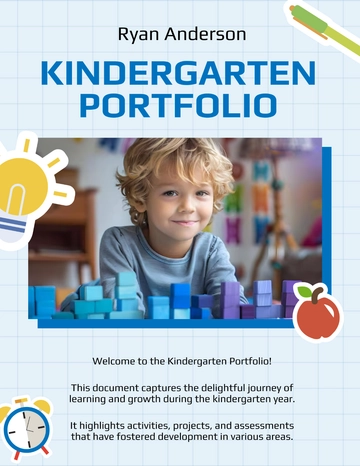Free Health & Safety Awareness Campaign Portfolio

Executive Summary
A. Overview
[Your Company Name] is devoted to ensuring the safety and well-being of its workforce. The Health & Safety Awareness Campaign is a strategic initiative aimed at ingraining a culture of safety within the organization. By focusing on key safety protocols, training, and communication, [Your Company Name] aims to create a secure working environment that prioritizes the health and welfare of every individual.
The campaign is not just a regulatory requirement; it represents our unwavering commitment to fostering a workplace where employees feel secure, valued, and empowered. As part of this commitment, the campaign integrates proactive measures, training initiatives, and robust communication strategies to cultivate a comprehensive safety culture.
B. Objectives
The Health & Safety Awareness Campaign has set forth the following objectives:
Raise Awareness: Disseminate knowledge on critical safety measures to ensure that every employee is well-informed and capable of mitigating potential risks.
Reduce Incidents: Through targeted education and engagement, the campaign aims to significantly reduce workplace accidents and incidents.
Cultural Transformation: Beyond compliance, the campaign seeks to instill a culture where safety is not just a set of rules but a shared responsibility ingrained in every aspect of our operations.
Campaign Overview
A. Introduction
The Health & Safety Awareness Campaign is not a mere initiative but a reflection of [Your Company Name]'s ethos, placing employee well-being at the core of its operations. The campaign is introduced as a dynamic response to evolving safety needs, underlining our proactive stance in addressing potential risks before they escalate.
B. Campaign Duration
The campaign is meticulously planned to unfold from [January 15, 2050], to [March 15, 2050]. This duration is chosen to ensure comprehensive coverage of all components, allowing sufficient time for engagement, feedback, and iterative improvements.
C. Target Audience
Every individual associated with [Your Company Name] is considered part of the campaign's target audience. From the [2,000] employees to the [500] contractors and the [100] visitors, the campaign seeks to inclusively involve everyone. By fostering a collective responsibility for safety, we aim to create an environment where each person actively contributes to the well-being of the entire community.
Campaign Components
A. Training Workshops
Topics Covered
The training workshops will cover essential safety topics to empower participants with the knowledge and skills needed for a secure work environment. Topics include:
Emergency evacuation procedures.
Proper use of personal protective equipment (PPE).
Hazard identification and reporting.
Schedule
The training workshops are scheduled as follows:
Date | Time | Venue |
[January 20, 2050] | [9:00 AM - 12:00 PM] | [Conference Room A] |
B. Safety Pamphlets
Informative pamphlets will be distributed to all participants, providing detailed safety guidelines, emergency contact information, and reporting procedures. The distribution plan includes [5,000] printed copies, distributed through Common Areas, Training Sessions, and Employee Desks.
C. Interactive Webinars
Engagement is key to the campaign's success. Interactive webinars will be conducted on specific safety topics. The schedule includes four webinars on [January 30, February 7, February 15, and March 5, 2050], from [3:00 PM - 4:30 PM]. Participants can join via the Zoom webinar platform. These webinars aim to encourage active participation and address questions and concerns.
Monitoring and Evaluation
A. Key Performance Indicators (KPIs)
To measure the success of the campaign, the following KPIs will be tracked:
Reduction in workplace accidents by [20%].
Increase in hazard reporting by [15%].
Improvement in safety compliance rates by [18%].
B. Feedback Mechanism
To gather valuable insights, a feedback mechanism will be established. Participants can provide feedback through post-workshop surveys, suggestion boxes placed in strategic locations, and virtual feedback sessions for webinars.
Communication Plan
A. Internal Communication
Internal communication for the Health & Safety Awareness Campaign will be conducted through [Your Company Name]'s established channels.
Email
Regular email communication will be sent to all employees, contractors, and relevant stakeholders. These emails will include campaign updates, training schedules, and important safety reminders. Emails will be sent bi-weekly, starting from [January 10, 2050].
Intranet
A dedicated section on the company's intranet will host campaign resources, training materials, and a forum for employees to share safety tips and experiences. This ensures continuous access to information throughout the campaign.
Social Media
[Your Company Social Media] platforms will be utilized to amplify the campaign's reach. Regular posts highlighting safety facts, success stories, and upcoming events will be shared. Employees are encouraged to engage and share these posts to foster a sense of collective responsibility.
B. External Communication
External communication will focus on informing clients, partners, and the broader community about [Your Company Name]'s commitment to safety.
Press Release
A press release will be issued at the start of the campaign, outlining the objectives and key components. This will be distributed to local media outlets and posted on our social media platforms.
Client Notification
Clients and partners will receive a dedicated communication outlining the campaign and its potential impact on services. This will be sent via email and followed by a direct contact initiative to address any specific concerns.
Budget
A. Allocation
The budget for the Health & Safety Awareness Campaign is allocated as follows:
Training Material
Printing of training manuals and materials: | [$10,000] |
Purchase of personal protective equipment (PPE) for training: |
Webinars
Platform subscription for webinars: | [$2,500] |
Speaker fees for expert presenters: |
Safety Pamphlets
Printing and distribution of safety pamphlets: | [$3,000] |
Miscellaneous
Campaign promotion materials (banners, posters): | [$2,000] |
Feedback mechanism setup: | |
Total Budget: |
Monitoring and Evaluation
A. Participant Surveys
Conducting participant surveys after each training workshop and webinar is integral to understanding the effectiveness of the campaign. The surveys will cover:
Relevance and clarity of training content.
Quality of training materials.
Presenter effectiveness.
Participant engagement levels.
Suggestions for improvement.
Survey data will be analyzed to identify strengths and areas for enhancement in the delivery of safety information. Continuous feedback will guide adjustments to future sessions for maximum impact.
B. Incident Reporting Analysis
A robust analysis of incident reports during the campaign period will be conducted. This involves:
Categorizing incidents by type and severity.
Identifying root causes.
Assessing the effectiveness of hazard reporting mechanisms.
Implementing corrective actions based on findings.
This analysis will provide valuable insights into the safety landscape, enabling proactive measures to address emerging trends and prevent recurring incidents.
Continuous Improvement Strategies
A. Quarterly Safety Meetings
To ensure ongoing improvement in safety practices, quarterly safety meetings will be established. These meetings will:
Review incident reports and lessons learned.
Discuss emerging safety concerns.
Evaluate the effectiveness of implemented safety measures.
Plan and strategize for continuous improvement initiatives.
Engaging key stakeholders in these meetings will foster a collective commitment to maintaining a safe work environment.
B. Recognition Program
The introduction of a safety recognition program is vital to acknowledge and incentivize proactive safety behaviors. The program will include:
Regularly recognizing individuals or teams with commendable safety practices.
Issuing certificates, awards, or other forms of recognition.
Showcasing success stories through internal communication channels.
Post-Campaign Analysis
A. Impact Assessment
Post-campaign, a comprehensive impact assessment will be conducted to evaluate the overall effectiveness of the Health & Safety Awareness Campaign. This assessment will include:
Comparison of pre-campaign and post-campaign incident rates.
Analysis of participant surveys to identify trends and areas of improvement.
Assessment of the campaign's influence on safety culture within the organization.
Identification of any unforeseen challenges and their resolutions.
B. Return on Investment (ROI)
A detailed ROI analysis will be conducted to measure the financial impact of the campaign. This analysis will consider:
Reduction in accident-related costs.
Increased productivity due to a safer working environment.
Tangible and intangible benefits resulting from improved safety practices.
Comparison of campaign costs to the financial gains realized.
This post-campaign analysis will provide valuable insights for future safety initiatives and help justify the resources allocated to the Health & Safety Awareness Campaign.
Future Safety Initiatives
A. Continuous Learning Programs
Building on the success of the Health & Safety Awareness Campaign, [Your Company Name] will introduce continuous learning programs. These programs will include:
Monthly safety webinars covering emerging safety topics.
Quarterly refresher courses on essential safety protocols.
Access to an online repository of safety resources for ongoing learning.
B. Technology Integration
Explore opportunities to leverage technology for enhanced safety measures. This may involve:
Implementing digital tools for real-time incident reporting.
Exploring virtual reality (VR) or augmented reality (AR) for immersive safety training experiences.
Utilizing data analytics for proactive identification of potential safety hazards.
Conclusion
The Health & Safety Awareness Campaign is a comprehensive initiative aimed at fostering a culture of safety within [Your Company Name]. Through targeted training, effective communication, and careful monitoring, we aim to achieve the set objectives and create a safer working environment for all.
For any inquiries or additional information, please contact:
[Your Name]
[Your Company Email]
[Your Company Number]
- 100% Customizable, free editor
- Access 1 Million+ Templates, photo’s & graphics
- Download or share as a template
- Click and replace photos, graphics, text, backgrounds
- Resize, crop, AI write & more
- Access advanced editor
Introducing Template.net's Health & Safety Awareness Campaign Portfolio Template, a comprehensive resource for planning and executing safety initiatives. Fully customizable and editable in our Ai Editor Tool, this template enables businesses to showcase their campaigns, strategies, and results effectively. Simplify the management of health and safety awareness efforts with our user-friendly platform, ensuring compliance and promoting workplace safety culture.





























